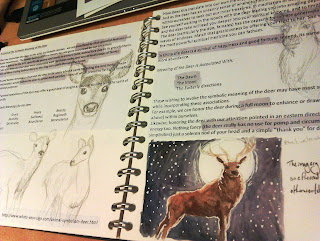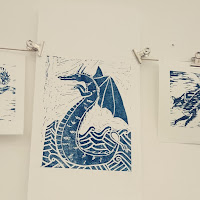This project was focused around animals within the theme of Shakespeare. I focused on deer because of the mythos and themes surrounding them and I was interested to know what kind of direction Shakespeare use them in.
I discovered that Shakespeares focus on deer was the hunting of stags, as that was a common sorting event of the time. However, the hunting lead to other themes, such as the pity one gets for the hunting of a deer; for example in Hamlet the line "let the stricken deer go weep" references the great pity that comes from a deer's tears.
Deer's tears were actually seen as quite powerful and to actually catch and kill a deer was a great feat. To see a deer shot was fascinating to women of the time and when a hunt had caught their prey it was tradition to cover your hands in the creatures blood (which is used by Shakespeare for reasons other than hunting). All these things come together to show a reverence for deer, an awe almost that is still carried on in modern times as seeing a deer much more rare; probably because they are hunted considerably less.
This project was also a good way to research the anatomy and build of an animal, as before I had focused my studies on people. I used paper as a way to separate and analyse the body parts of a stag.
I also found it important to study into forested environments, and this was for two important reasons. One, obviously this is where deer live and are found so giving context to the animal was crucial. Secondly, this environment would not have changed since Shakespeare's time, so whether you see deer as rarely seen ethereal creatures or targets for a hunt, you'll be seeing them in the same surroundings that the people of Shakespeare's day did.











































